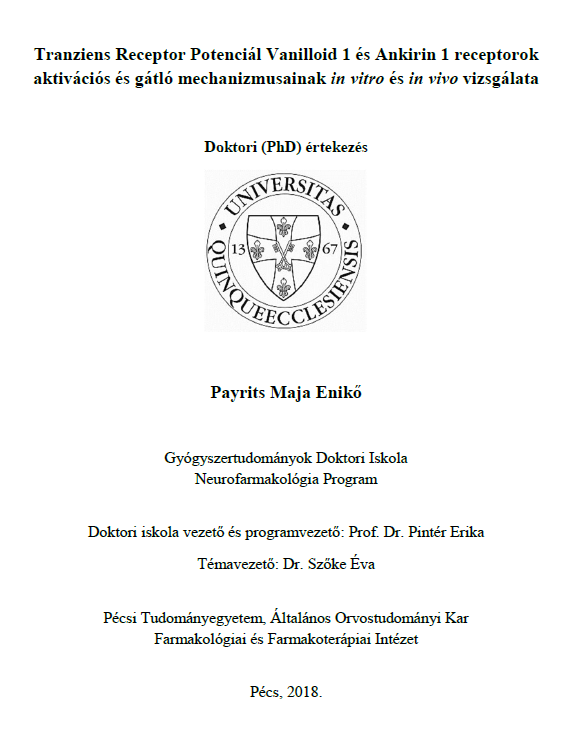Tranziens Receptor Potenciál Vanilloid 1 és Ankirin 1 receptorok aktivációs és gátló mechanizmusainak in vitro és in vivo vizsgálata
Abstract
Since the treatment of neuropathic pain and the neurogenic components of the inflammatory processes is an unresolved problem due to a grate range of severe side effect and the presently available drug groups cannot be administered for longer time periods, nowadays, the effects of these drug groups are widely investigated. The examination of sensory receptors on nociceptive nerve endings is in the focus of the analgesic drug development strategies. Drug candidates which could act directly at the level of the sensory nerve terminals and selectively inhibit nociceptor activation may have a better side effect profile and might be more effective in the treatment of neuropathic pain, than the currently available anti-inflammatory drugs.
Transient Receptor Potential (TRP) ion channels have a crucial role in the mechanism of pain and neurogenic inflammation via the activation of sensory nerves. Our research group examines the activation of TRP ion channels on trigeminal and dorsal root sensory neurons and on nerve endings of peripheral sensory neurons. These receptors might serve as targets for the development of new anti-inflammatory and analgesic drugs with different mechanisms of action. Therefore, there is a particularly great need to investigate the role of these receptors, especially the Transient Receptor Potential Vanilloid 1 (TRPV1) and Transient Receptor Potential Ankyrin 1 (TRPA1) ion channels, in pain and inflammatory processes and understand their mechanisms of action.

